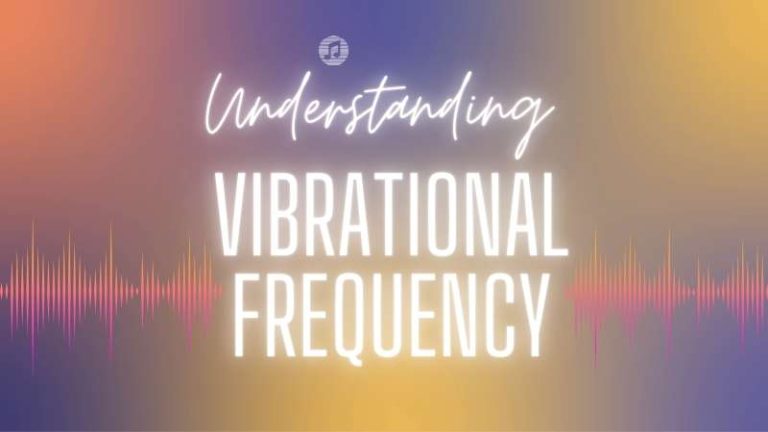
Manifestation and Religion
Bridging Spirituality and Reality
Manifestation, a term often associated with the law of attraction, refers to the process of bringing your desires and intentions into reality through focused thoughts and actions. This concept has gained significant popularity in recent years, intertwining with various spiritual beliefs and practices. One such intersection is with religion, where individuals harness the power of manifestation within the context of their faith and spirituality. In this blog post, we will explore the correlation between manifestation and religion, how they coalesce, and how this synergy can positively impact our lives.
1. Understanding Manifestation:
Manifestation involves the practice of envisioning and affirming our goals, dreams, or desires to manifest them in our lives. It’s about harnessing the power of positive thinking, intention-setting, and focused actions to attract what we want. The core idea is that our thoughts and beliefs have the potential to shape our reality.
2. The Essence of Religion:
Religion, on the other hand, encompasses a system of beliefs, rituals, and practices centred around a higher power or divine entity. It often offers moral and spiritual guidance, a sense of purpose, and a community for its followers. Different religions have their unique beliefs and practices, yet they all share the fundamental principle of connecting individuals to something greater than themselves.
3. Common Ground: Faith and Manifestation:
- Belief and Faith: At the heart of both manifestation and religion lies the power of belief and faith. Manifestation encourages believing in the possibility of achieving our desires, while religion encourages faith in a higher power and the divine plan. Combining these beliefs can deepen our conviction and amplify our manifesting power.
- Positive Energy and Intentions: Both manifestation and religious practices promote positivity and intentionality. In manifestation, we focus on positive thoughts and energy to attract what we desire. Similarly, in religion, prayers, rituals, and acts of kindness are driven by positive intentions, fostering a sense of spiritual growth and connectedness.
- Prayer and Meditation: Many religious practices involve prayer and meditation, which align with the manifestation process. Prayer is a form of asking the divine for what we need, and meditation helps in quieting the mind and visualizing our desires clearly – essential steps in the manifestation journey.
- Gratitude and Surrender: Gratitude and surrender are common themes in both manifestation and religion. Expressing gratitude for what we have and surrendering our worries to a higher power are practices that enhance our manifestation efforts and provide comfort and peace in religious contexts.
4. Manifestation within Different Religious Frameworks:
- Christianity:In Christianity, manifestation is often seen through prayer and aligning one’s desires with the will of God. Christians believe that God listens to their prayers and provides according to His divine plan. Prayer, faith, and gratitude are essential components of manifestation within the Christian faith. By aligning their desires with God’s will and expressing gratitude, believers strengthen their faith and manifest their hopes and dreams.
- Hinduism: bHinduism, with its rich tapestry of beliefs and practices, incorporates manifestation through focused meditation, rituals, and prayer. The law of karma, which asserts that one’s actions and intentions influence future experiences, aligns with the manifestation principle. Hindus believe that by focusing on positive intentions, performing good actions, and seeking the divine through rituals and meditation, they can manifest a positive and fulfilling life.
- Buddhism: Buddhism emphasizes mindfulness, intention, and mental discipline. Practitioners are encouraged to set clear intentions and cultivate a positive mind set through practices like meditation and mindfulness. Manifestation, within the Buddhist context, involves aligning one’s thoughts, desires, and actions with the noble eightfold path, ultimately leading to a life of purpose, peace, and enlightenment.
- Islam: In Islam, manifestation is viewed through prayer, faith, and trust in Allah’s plan. Muslims believe in the power of supplication (dua) and regularly pray to Allah, expressing their desires and seeking guidance. The belief that Allah knows what is best and will answer prayers according to His wisdom is foundational to manifestation within Islam. Trusting in Allah’s timing and plan is crucial in manifesting one’s hopes and dreams.
- New Thought Movement: The New Thought Movement, a spiritual movement influenced by various religious and philosophical beliefs, emphasizes the power of positive thinking, affirmations, and visualization. Followers of this movement believe that aligning one’s thoughts and beliefs with the universe or a higher power can manifest desired outcomes. They often practice techniques such as affirmations, visualization, and gratitude to manifest their intentions and improve their lives.
5. Conclusion:
In conclusion, manifestation and religion, though distinct in their approaches and beliefs, share a fundamental essence of harnessing the power of belief, positive energy, intentionality, and focused actions. Both advocate for the significance of faith and aligning oneself with a higher power or purpose. While manifestation emphasizes personal empowerment through deliberate thoughts and actions to manifest desires, religion often involves surrendering to a divine plan while nurturing faith in a higher being.
The convergence of manifestation and religion lies in the acknowledgement that our thoughts and beliefs influence our reality. Whether through prayer, meditation, visualization, or rituals, both practices centre on the cultivation of a positive and hopeful mind set. Gratitude, an important aspect in both manifestation and religious teachings, fosters contentment and attracts abundance.
Ultimately, manifestation and religion inspire individuals to live purposefully, embracing hope, love, and compassion. By integrating the principles of manifestation within their religious framework, individuals can deepen their faith, strengthen their resolve, and align their desires with the divine, manifesting a life that resonates with their spiritual values and beliefs. In essence, both concepts strive to guide individuals towards a life rich with meaning, connection, and fulfilment.
Do christians believe in manifestation
Christians have different views on manifestation based on their beliefs about faith, prayer, and God’s will.
1. Biblical Basis for Manifestation
Many Christians believe that manifestation comes from faith. They think that prayer and trust in God can bring blessings. For example, Mark 11:24 says that if you believe you have received what you ask for in prayer, it will be yours. Proverbs 23:7 suggests that our thoughts can shape our reality.
2. Prayer vs. New Age Manifestation
Some Christians see a difference between traditional prayer and New Age ideas like the Law of Attraction. Christian prayer focuses on seeking God’s guidance and aligning with His will, rather than just fulfilling personal wishes. New Age manifestation often emphasizes individual desires and how the universe responds to them.
3. Skepticism About Manifestation
Some Christians reject the Law of Attraction, viewing it as moving away from relying on God to relying on oneself. Deuteronomy 18:10-12 warns against occult practices, which some link to New Age beliefs. They emphasize trusting God’s plan instead of trying to control outcomes.
4. A Christian View on Positive Mindset
Many Christians embrace a mindset of faith, positivity, and gratitude, similar to manifestation principles. Philippians 4:8 encourages focusing on what is true and good. They promote hard work, prayer, and faith while waiting for God’s timing.
In Summary:
✅ Some Christians support manifestation through prayer and trust in God.
❌ Others reject the Law of Attraction, seeing it as selfish or against biblical teachings.
🙏 Many focus on prayer, gratitude, and faith, choosing to rely on God.
Bible verses about manifestation
The Bible doesn’t directly mention “manifestation” as we understand it today in Law of Attraction teachings, but it highlights faith, belief, a positive mindset, and divine blessings. Here are some key scriptures that relate to faith-driven manifestation:
Faith and Belief Lead to Results
✅ Mark 11:24 – “I tell you, whatever you ask for in prayer, believe that you have received it, and it will be yours.”
➡️ This verse encourages having faith and confidence in God’s ability to answer prayers.
✅ Matthew 21:22 – “And all things you ask in prayer, believing, you will receive.”
➡️ Manifestation through faith means trusting God while aligning with His wishes.
✅ Hebrews 11:1 – “Now faith is the assurance of things hoped for, the conviction of things not seen.”
➡️ This verse highlights how strong faith can bring about what we cannot yet see.





